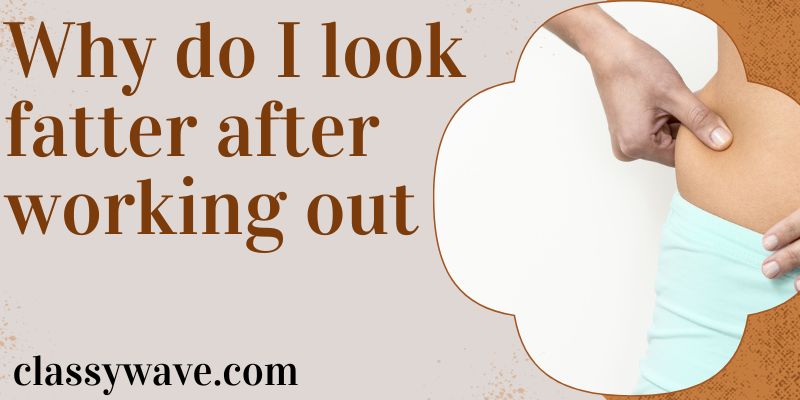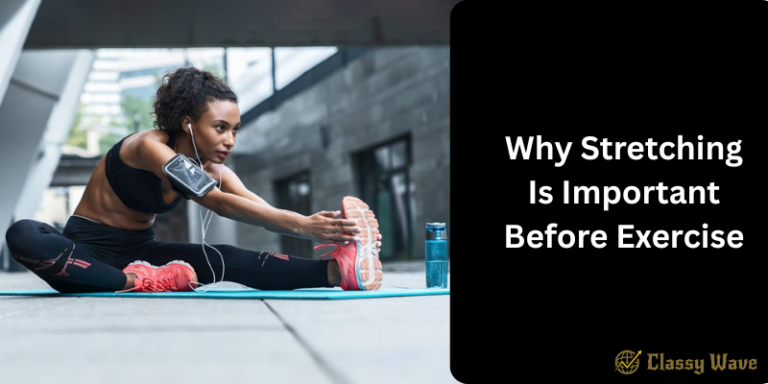Why do I look fatter after working out – the Hidden Reasons?
It’s a common experience: you hit the gym for a hard workout, and when you step on the scale afterward, you’re disappointed to see that you weigh more than you did before. But don’t worry, you’re not alone. This phenomenon is perfectly normal, and there are a few reasons why it happens.
In this article, we’ll take a closer look at why you might look fatter after working out, and what you can do about it. We’ll also discuss some tips for losing weight and building muscle. So, if you’re ready to learn more, keep reading!
Why Do I Look Fatter After Working Out? A Step-by-Step Guide
1. Muscle Inflammation
As we mentioned earlier, one of the main reasons why you might look fatter after working out is because of muscle inflammation. When you work out, you tear down your muscle fibers. This is normal, and it’s how your muscles grow stronger. However, inflammation can make your muscles look bigger and puffier than usual.
The good news is that muscle inflammation is usually temporary. Within a few days or even hours of your workout, your muscles should start to return to their normal size. However, there are a few things you can do to help reduce muscle inflammation and speed up the recovery process, such as:
- Cooling down after your workout. This will help to reduce blood flow to your muscles and reduce inflammation.
- Stretching your muscles after your workout. This will help to improve flexibility and reduce muscle soreness.
- Eating a healthy diet. A healthy diet will provide your body with the nutrients it needs to recover from your workout and build muscle.
- Getting enough sleep. Sleep is essential for muscle recovery.
2. Water Retention
Another reason why you might look fatter after working out is because of water retention. When you work out, you sweat a lot. This can lead to dehydration. When your body is dehydrated, it holds on to water in an effort to stay hydrated. This water retention can make you look bloated and puffy.
The best way to prevent water retention is to stay hydrated. Make sure to drink plenty of water before, during, and after your workout. You may also want to consider drinking an electrolyte beverage, such as a sports drink, to help replenish your electrolytes.
3. Eating Too Much
Finally, if you’re eating more than you’re burning off, you’re going to gain weight, regardless of how much you work out. So, if you’re looking to lose weight, it’s important to make sure that you’re eating a healthy diet in addition to exercising regularly.
To lose weight, you need to create a calorie deficit. This means that you need to burn more calories than you consume. You can do this by eating a healthy diet and exercising regularly.
How to Look Leaner After Working Out
If you’re looking to look leaner after working out, there are a few things you can do:
- Focus on compound exercises. Compound exercises work for multiple muscle groups at the same time. This is a great way to burn calories and build muscle. Some examples of compound exercises include squats, lunges, deadlifts, bench presses, and rows.
- Lift heavy weights. Lifting heavy weights is the best way to build muscle. If you’re not sure how much weight to lift, start with a weight that you can lift for 8-12 repetitions. As you get stronger, you can gradually increase the weight.
- Get enough rest. Sleep is essential for muscle recovery and growth. Make sure to get 7-8 hours of sleep each night.
- Eat a healthy diet. A healthy diet will provide your body with the nutrients it needs to recover.
How to Reduce Muscle Inflammation After Working Out?
Cool Down After Your Workout
A cool-down is important after any workout, but it’s especially important if you’re trying to reduce muscle inflammation. A cool-down helps to gradually slow down your heart rate and blood flow, which can help to reduce inflammation.
To cool down, try doing some light cardio, such as walking or jogging, for 5-10 minutes. You can also do some static stretching, such as holding each stretch for 30 seconds.
Stretch Your Muscles After Your Workout
Stretching helps to improve flexibility and reduce muscle soreness. It can also help to reduce muscle inflammation.
To stretch your muscles, hold each stretch for 30 seconds. Focus on stretching all of the major muscle groups, such as your hamstrings, quadriceps, calves, glutes, back, shoulders, and chest.
Eat a Healthy Diet
A healthy diet provides your body with the nutrients it needs to recover from your workout and build muscle. It can also help to reduce muscle inflammation.
Make sure to eat plenty of fruits, vegetables, and whole grains. You should also include lean protein sources, such as chicken, fish, beans, and lentils, in your diet.
Get Enough Sleep
Sleep is essential for muscle recovery. When you don’t get enough sleep, your body doesn’t have enough time to repair and rebuild your muscles. This can lead to muscle inflammation and soreness.
- Aim for 7-8 hours of sleep each night.
How to Prevent Water Retention After Working Out
Stay Hydrated
The best way to prevent water retention is to stay hydrated. Make sure to drink plenty of water before, during, and after your workout.
You may also want to consider drinking an electrolyte beverage, such as a sports drink, to help replenish your electrolytes. Electrolytes are minerals that help to regulate fluid balance in your body.
How to Create a Calorie Deficit for Weight Loss
Eat a Healthy Diet
To create a calorie deficit, you need to burn more calories than you consume. You can do this by eating a healthy diet and exercising regularly.
A healthy diet provides your body with the nutrients it needs to function properly and to lose weight. Make sure to eat plenty of fruits, vegetables, and whole grains. You should also include lean protein sources and healthy fats in your diet.
Exercise Regularly
Exercise helps to burn calories and reduce body fat. Aim for at least 30 minutes of moderate-intensity exercise most days of the week.
You can also consider doing high-intensity interval training (HIIT), which is a type of exercise that involves short bursts of intense activity followed by periods of rest. HIIT is a very effective way to burn calories and lose fat.
Conclusion:
There are a few reasons why you might look fatter after working out: muscle inflammation, water retention, and eating too much. To look leaner after working out, focus on compound exercises, lift heavy weights, get enough rest, and eat a healthy diet.
To reduce muscle inflammation, cool down after your workout, stretch your muscles, eat a healthy diet, and get enough sleep. To prevent water retention, stay hydrated. To create a calorie deficit for weight loss, eat a healthy diet and exercise regularly.
Remember, it takes time to see results from your workouts. Don’t get discouraged if you don’t look the way you want to overnight. Just keep working hard and be patient, and you will eventually reach your goals.
FAQs
Question: Why do I look fatter after working out?
Answer: Temporary water retention and muscle inflammation can create the appearance of increased size post-exercise.
Question: Does exercise make me gain weight?
Answer: No, but muscle inflammation and fluid retention can temporarily impact weight and appearance after a workout.
Question: Can working out cause bloating?
Answer: Yes, intense exercise may lead to temporary water retention and bloating, affecting how your body appears.
Question: Why do my clothes feel tighter after the gym?
Answer: Increased blood flow and temporary fluid retention can make clothing feel snug after a workout, but it’s temporary.
Question: Does muscle weigh more than fat?
Answer: No, a pound of muscle and a pound of fat weigh the same, but muscle is denser, impacting body composition.







